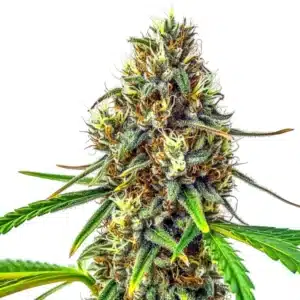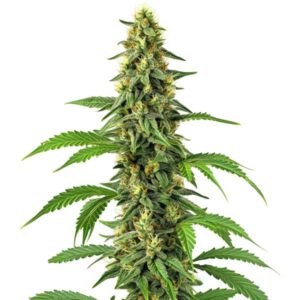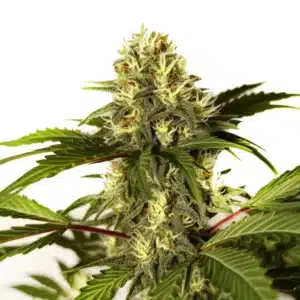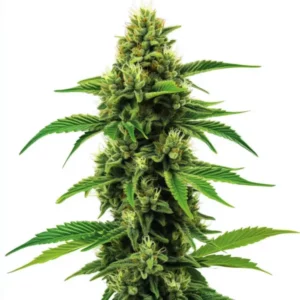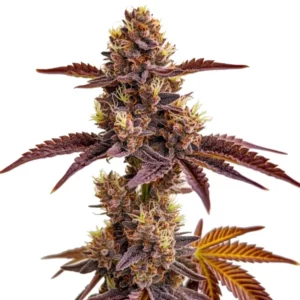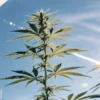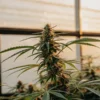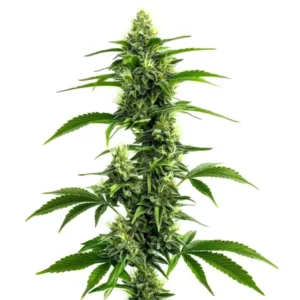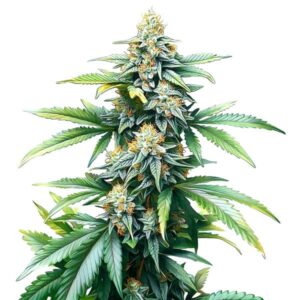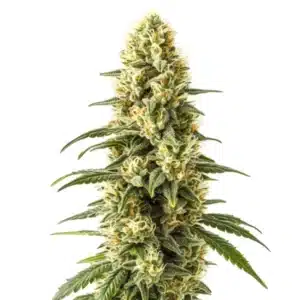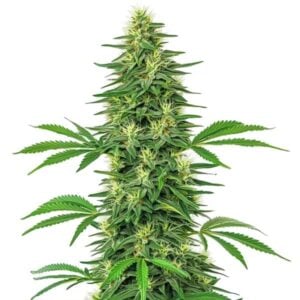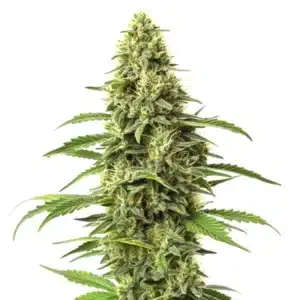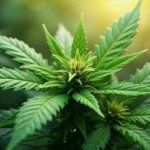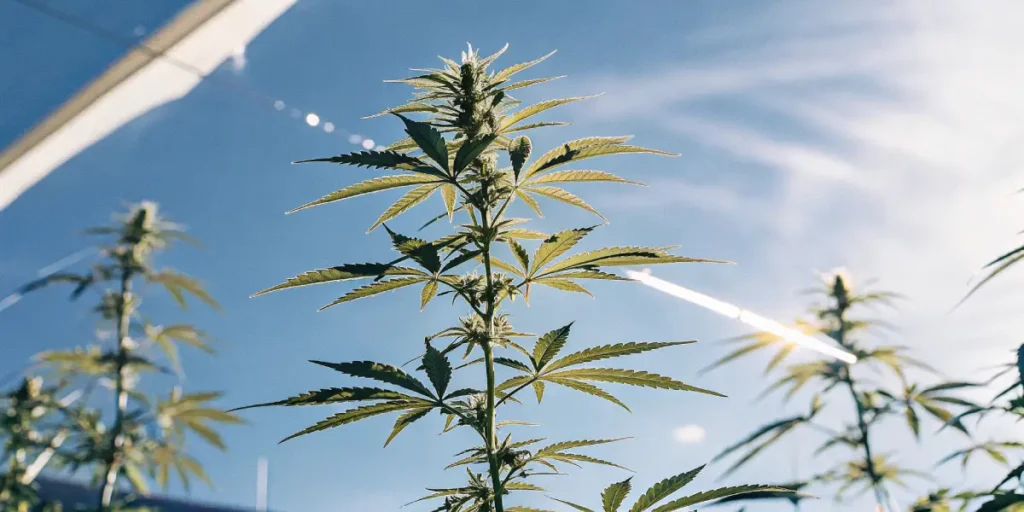
What is Leaf Turgor in Cannabis?
Ever noticed how a cannabis plant’s leaves can look vibrant and full? That’s often due to leaf turgor. Leaf turgor is the pressure inside the leaf cells that keeps them plump and upright. When you ask, “what is leaf turgor in cannabis,” think of it as the plant’s way of standing tall and healthy.
Leaf turgor pressure in cannabis plants plays a crucial role in their overall health. It helps the plant maintain its structure. Without it, leaves can wilt and droop, showing signs of stress. This internal pressure is mainly due to water inside the plant’s cells, keeping them firm.
Recommended Strains
24K Gold Regular
-
THC: 19% - 22%
-
Type of seed: Regular
-
Phenotype: 40% Sativa / 60% Indica
-
Flavor: Citrus, Fruity, Orange, Sweet
-
Day to flower: 9 - 10 weeks
24k Gold
-
THC: 19% - 22%
-
Type of seed: Feminized
-
Phenotype: 40% Sativa / 60% Indica
-
Flavor: Citrus, Herbal, Pine
-
Day to flower: 8 - 10 weeks
When growing, whether you’re a beginner or a seasoned pro, maintaining healthy leaf turgor in cannabis is essential. It tells you a lot about the plant’s water intake, health, and growth potential. A healthy turgor means your plant is likely thriving.
How Leaf Turgor Affects Cannabis Growth
Leaf turgor affects cannabis growth by influencing how well the plant can carry out photosynthesis. When leaves are turgid, they are better at capturing sunlight. This means the plant can produce more energy, leading to robust growth. It’s like giving your plants a boost of vitality.
On the flip side, signs of low turgor in cannabis leaves can be a red flag. If leaves are drooping, it may signal that your plant isn’t getting enough water or that the water it’s getting isn’t being used effectively. Addressing this issue can make a significant difference in the health and yield of your cannabis plants.
Knowing how leaf turgor affects cannabis growth is crucial for optimizing your cultivation strategy. Turgid leaves allow for efficient nutrient transport within the plant, ensuring that all parts receive the necessary sustenance for growth. This process is vital for bud development, particularly in the flowering stage.
Moreover, healthy leaf turgor in cannabis can enhance the plant’s resilience against pests and diseases. A well-hydrated plant with strong turgor pressure is better equipped to withstand environmental stresses, making it more robust and less prone to infestations or infections.
Signs of Low Turgor in Cannabis Leaves
Identifying signs of low turgor in cannabis leaves is pretty straightforward. Leaves may appear limp, soft, and less vibrant. This could be due to various factors, including inadequate watering or poor soil conditions.
Check the soil moisture first. Often, dry soil is a primary cause of low turgor. However, overwatering can also lead to similar symptoms by suffocating the roots. It’s a balancing act that growers need to master for optimal plant health.
Besides to visible signs, low leaf turgor pressure in cannabis plants can be detected by touch. Turgid leaves feel firm and resilient, whereas leaves with low turgor are more pliable and delicate. Monitoring these physical characteristics can provide early warnings of potential issues.
Growers should also be aware of environmental factors that exacerbate low turgor. Excessive wind or direct sunlight during peak hours can increase transpiration rates, leading to water loss and decreased turgor. Implementing protective measures, like shading or windbreaks, can mitigate these effects.
Promos & Deals
Maintaining Healthy Leaf Turgor in Cannabis
Keeping your cannabis plants in top shape requires regular monitoring of water levels. To maintain healthy leaf turgor in cannabis, it’s vital to provide consistent watering schedules. This helps ensure the plant cells remain full and firm.
Using quality soil that retains moisture well can also aid in maintaining ideal turgor. Products that improve soil aeration and drainage, like perlite, can be beneficial. They help create an environment where roots can thrive, supporting robust leaf turgor.
Besides to water management, nutrient availability plays a pivotal role in maintaining healthy leaf turgor in cannabis. Balanced fertilization ensures that plants have access to essential minerals that support cell wall strength and water retention capabilities.
Environmental monitoring is another critical component. Maintaining optimal temperature and humidity levels can prevent undue stress on the plant, thereby supporting stable leaf turgor. Tools like hygrometers and thermometers can assist in keeping these parameters within the ideal range.
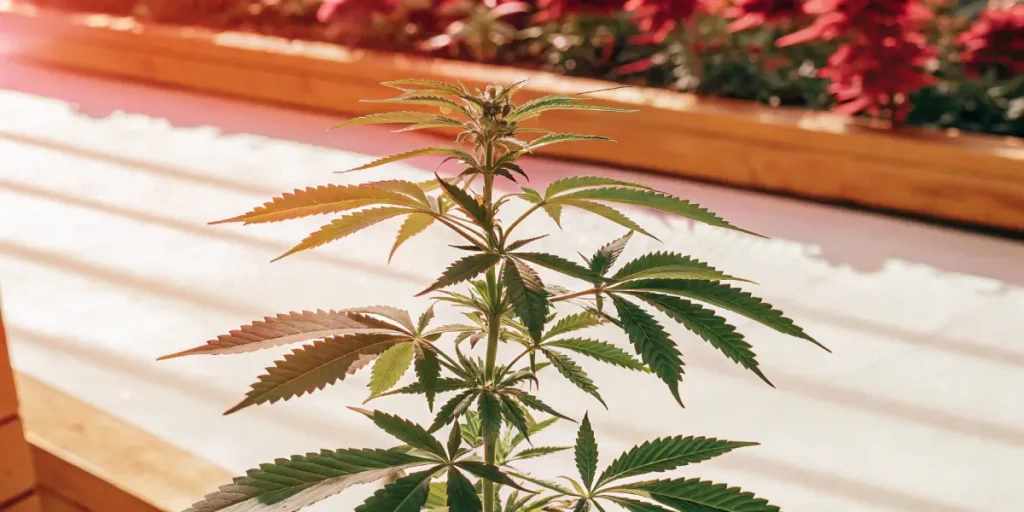
Impact of Water Stress on Cannabis Leaf Turgor
Water stress, whether too much or too little, significantly impacts leaf turgor. During drought conditions, leaf turgor pressure in cannabis plants decreases, leading to wilting. This is because the plant can’t absorb sufficient water.
Conversely, overwatering can cause root rot, preventing the plant from absorbing nutrients effectively. This also results in lowered turgor and affects overall plant health. Observing your plant’s reaction to watering can help you find the right balance.
Knowing the impact of water stress on cannabis leaf turgor is essential for preventing long-term damage. Chronic water stress can lead to stunted growth and reduced plant vitality, ultimately affecting yield and potency.
Implementing a regular watering routine tailored to the specific needs of your cannabis strain can mitigate these risks. Consider using moisture sensors or monitoring plant weight changes to refine your approach and ensure optimal leaf turgor conditions.
Real-Life Examples: Strains and Turgor
Let’s look at some strains. Blue Dream is a popular choice for many growers. It requires a balanced approach to watering to maintain its leaf turgor. This strain is forgiving but responds well to attention to detail in its care.
Bruce Banner is another strain where leaf turgor can be an indicator of health. Known for its high THC levels, ensuring proper water balance can enhance its potency. Watch its leaves for signs of distress and adjust watering as needed.
Knowing what is leaf turgor in cannabis can be particularly beneficial when cultivating diverse strains. Each strain has unique water and nutrient needs, and recognizing these differences can optimize growth conditions and improve the overall health of your plants.
Gelato, with its dense buds and vibrant foliage, demands meticulous attention to environmental conditions. Regular leaf turgor assessments can inform growers when adjustments are necessary, ensuring that this strain reaches its full potential and delivers a quality harvest.
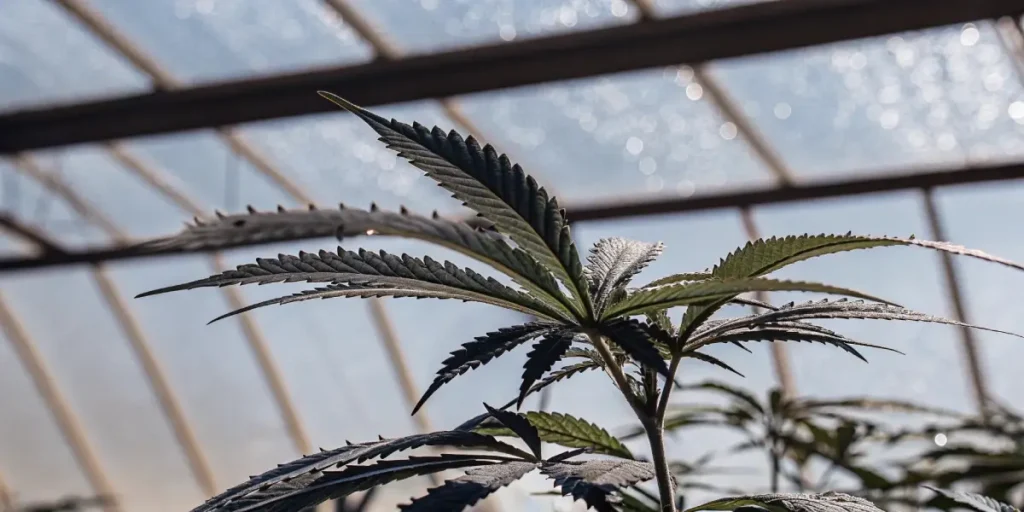
FAQs
What causes low leaf turgor in cannabis plants?
Low leaf turgor in cannabis plants can be caused by a variety of factors. Water stress is a primary culprit. This could mean either too much or too little water. Both scenarios lead to similar symptoms: droopy, wilted leaves. Check your watering schedule and soil moisture levels to adjust accordingly.
Environmental conditions also play a significant role. High temperatures and low humidity levels can cause plants to lose water quickly. This stresses the plant and reduces turgor. Maintaining a stable environment can help prevent these issues.
Nutrient deficiencies can also contribute to low leaf turgor in cannabis plants. Ensuring that your plants receive a balanced diet of essential minerals and nutrients can help support cell structure and water retention capabilities.
The type of substrate used in growing can impact turgor as well. Soil types with poor drainage or insufficient aeration can lead to root problems, affecting the plant’s ability to maintain healthy turgor. Choosing the right substrate is crucial for optimal plant health.
How can I improve leaf turgor in my cannabis plants?
Improving leaf turgor involves ensuring your plants have the right amount of water and nutrients. Start by checking your soil’s moisture levels. If it’s too dry, gradually increase watering. If it’s too wet, improve drainage to prevent root rot.
Consider the type of soil and its water retention properties. Adding components like perlite can enhance aeration and prevent waterlogging. These adjustments can lead to healthier, more turgid leaves.
Regularly reassessing your watering schedule can also aid in improving leaf turgor. Adjusting the frequency and quantity based on environmental conditions and plant needs can ensure that your cannabis maintains optimal hydration levels.
Incorporating organic matter into your soil mix can enhance its structure and nutrient profile, supporting better water distribution and uptake by the plant. This holistic approach can foster stronger leaf turgor and overall plant health.
What is the impact of leaf turgor on cannabis yield?
Leaf turgor directly affects cannabis yield by influencing the plant’s ability to photosynthesize. When leaves are turgid, they capture sunlight more efficiently, boosting energy production. This energy is crucial for growth and bud development.
Poor turgor can lead to reduced growth rates, smaller buds, and ultimately lower yields. Monitoring leaf turgor can give you insights into the plant’s health and potential output. Adjusting care practices can significantly enhance yield.
The impact of leaf turgor on cannabis yield cannot be overstated. Turgor pressure affects not just growth rates but also the quality of the harvest. Well-maintained turgor ensures that plants are in peak condition, which can result in more potent and flavorful buds.
Investing time in knowing how leaf turgor affects cannabis growth and yield can pay off in the long run. By maintaining optimal turgor, you can maximize the potential of your plants, leading to bountiful and high-quality harvests.
Can leaf turgor be an indicator of other plant issues?
Yes, leaf turgor can indicate broader plant health issues. Droopy leaves may signal root problems, nutrient deficiencies, or pest infestations. It’s often one of the first visible signs that something might be wrong.
Regularly inspecting your plants for changes in turgor can help you catch and address issues early. This proactive approach can prevent minor problems from becoming major setbacks in your grow operation.
Leaf turgor can also provide insights into environmental imbalances, such as improper lighting conditions or unsuitable temperature ranges. Addressing these factors can restore healthy turgor and improve overall plant vitality.
By knowing what is leaf turgor in cannabis, growers can better diagnose and mitigate potential issues. Recognizing the connections between turgor and plant health enables more informed decisions and effective interventions.
Are some cannabis strains more sensitive to turgor issues?
Indeed, some cannabis strains are more sensitive to turgor issues than others. Strains like Gelato may require more precise watering schedules and environmental controls. Their dense foliage can quickly show signs of stress if turgor is compromised.
However, strains like Blue Dream and Bruce Banner 3 are known for their resilience. They can tolerate minor fluctuations in water levels better. Knowing your chosen strain’s specific needs can help you manage turgor effectively, ensuring a healthy and productive grow.
For growers exploring different strains, it’s important to consider how leaf turgor pressure in cannabis plants varies among them. This knowledge can guide tailored care approaches that accommodate each strain’s unique requirements.
Strain sensitivity to turgor issues may also influence how growers select their cultivation methods. By choosing strains aligned with their environment and expertise, growers can optimize conditions for maintaining healthy turgor and maximizing harvest potential.

